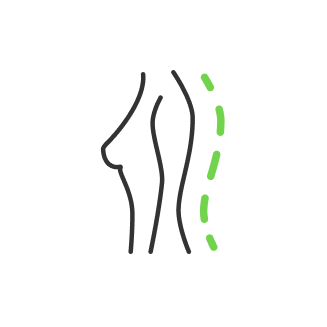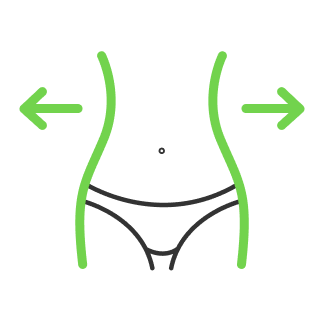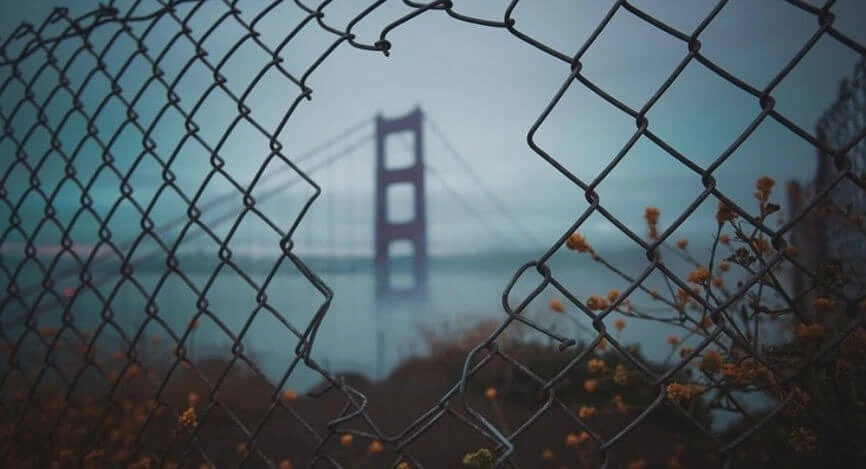What is shallow depth of field?

- What does shallow mean in a photo?
- How to get shallow depth of field?
- How does aperture affect depth of field?
- Focal length
- Distance to the subject and short DOF
- Sensor size influence
- Why depth of field is important?
- Post-processing DOF mimic
- How to do sharp images?
- Depth example in movies – Cons & Pros
- Pros of shallow depth of field
- Technical standpoint
- Cons of Shallow Depth Of Field
- Conclusion
Photography is developing by leaps and bounds, and these days you need to know the subject well in order to distinguish yourself. It is no longer possible to surprise anyone by simply taking high-quality pictures; you have to be able to add a twist with the help of various techniques and tricks. This can be achieved if you know a lot about the settings of your camera. Various combinations of these settings will help you not only to achieve the correct exposure but also allow you to achieve different and interesting effects altogether. In today's article, we will discuss what shallow depth of field is, how to achieve this effect, and when it is best to use this technique.
What does shallow mean in a photo?
Before we go deep into the subject, let us define what is the depth of field photography and what shallow means.

Depth of field – is a measurement of the distance between the nearest point that a lens renders in sharp focus and the furthest object that is sharp. For example, one could shoot a close-up shot of a character on a telephoto lens where the nearest point of focus is their eyes, and the furthest point of focus is their ears. In this example, the distance between these two points, the depth of field, is a measly 3 inches (ca. 8 cm). This is what we would call shallow focus.

In another example, a camera may shoot a long shot on a wide-angle lens where everything from the foreground to the horizon is in sharp focus. In this example, the distance between those points is so far that we just call it infinity. This is what we call deep focus.

We can vary distances with low depth of field and decide what is going to be in our shot. It could be a focused background with blurred foreground and the opposite, and we can also set a middle point or focus on a certain area and isolate surroundings. Here is an example of a shallow shot of the flower isolated from its surroundings with the DOF effect.

How to get shallow depth of field?
Let us break this down a bit more as we dive into what depth of field actually is. We will discuss the factors and settings that can change it. And then go over some pros for shooting with a shallow depth of field, as well as go over the reasons why shallow focus may actually be undesirable.
So what are the ways that we can influence depth of field in general, and how to get shallow depth of field images in particular? There are three variables:
- The Aperture of the lens
- Focus Distance to subject
- The Focal Length of your lens
All these 3 features have ways to get certain areas to stay in focus and each of them is useful to know when to use or even combine. Let us break it down one by one.
How does aperture affect depth of field?

So let us first talk about the aperture and depth of field dependencies. The aperture is the opening in your lens. The wider that opening the smaller the actual number and the shallower depth of field. The aperture opening is measured in the f-stops value that you can find on your device. With low f-stop value, you can get pictures of depth and even videos. For example, by shooting an interview with F/1.8 we are going to have a shallow depth of field. The interviewed person stays in focus while the background is out of focus. If we multiply that value to let us say F/18 then we are going to start seeing a lot more in the focus from the background because the depth of field becomes wider. That is how shallow depth of field aperture settings can help you achieve the bokeh effect which has the most common use and is a very popular technique. One reason why fast lenses such as T/1.3 cinema lenses are desirable is that cinematographers can shoot them wide open to create a background fill of soft bokeh. When a long focal length lens, a subject close to the camera, and a fast aperture are all combined – much to the horror and disgust of the focus puller – the depth of field that a camera captures will be very shallow. Inversely a wide focal length lens, a subject far away, and a closed-down stop will mean that the depth of field will be very deep, and the focus puller can relax.
Focal length

Your lens can also help to achieve interesting depth-of-field photos. Lenses have focal length parameters measured in millimeters. The longer the focal length the shallower depth of field. For instance, shots taken on a 100 mm lens will get a much shallower depth of field in comparison to a 16 mm lens. Shots captured with a telephoto lens that has a long focal length such as a 290 mm zoom have a much shallower depth of field than shots that use a wide angle lens such as an 18 mm lens – which will create a deeper depth of field. So, one way to create a background with more blur is to choose a longer focal length.

Distance to the subject and short DOF

The third way to affect your depth of field is the distance to your subject. The closer you are to the subject, and the tighter the shot, the shallower the depth of field becomes. This explains why when you shoot an extremely wide shot that focuses on the horizon most of the frame will be sharp. If the camera is very close to the subject the fewer details would stay in focus around it. Things in the background will be in focus only if the camera stays further away, in that case, the depth of field will be wider.
To summarize, photography depth of field depends on your lens, aperture, and distance. Varying this you can get either shallow or sharp focus.
Sensor size influence

There is also a fourth variable, the sensor size, which does not directly affect the image’s depth of field but does affect it indirectly. Shooting on cameras with a larger sensor size produces images that have a wider field of view. To compensate for this extra width, cinematographers will either shoot on longer focal length lenses to produce a comparable field of view or are forced to physically move the camera closer to maintain a similar frame. As we now know, those two actions, using a longer focal length and focusing on a subject closer to the camera will both make the depth of field shallower.
Why depth of field is important?
Knowing how to use depth of field could make a big difference in your photography and even filmmaking. Say you are a landscape photographer, and you want to get this nice beautiful landscape shot and get everything in focus. For that, you need to close down your aperture to F/12 or something. You need to use a wide-angle lens such as 18 mm for instance. And you also use the distance. All these 3 things will help to get everything in focus, and you will capture maximum details with that deep focus shot.

As for filmmakers, knowing how to do shallow depth of field will help them to isolate their subject of the background, so the viewer pays attention to the character in certain moments. This is a very useful technique for interviews for example. Knowing how to use all three features will help to achieve the style in a shot you want.
Post-processing DOF mimic
People try to create shallow DOF look using different software like Light Room or Photoshop, and usually, it comes down to pretty awful results. This is not something that you should do in post, shallow depth of field photography is happening in your lens.
How to do sharp images?
If you are interested to do the opposite and get sharp photos instead of using shallow depth of field you may be interested in such a topic as focus stacking. In this article, we discuss different focus stacking techniques to achieve super-sharp images while doing macro. This technique is very useful for product photography, especially when you shoot such things as watches which have a lot of small details up close. For that, you have to use specific types of photography lenses that will allow you to do macrophotography. This method allows post-processing which is basically its main feature that combines different images in software to stack the focus of each in one.
Depth example in movies – Cons & Pros

The most clichéd misconception about shooting with a blurred background is the belief that scenes in this way will look more cinematic. There are a lot of great movies from the past that were shot without depth-of-field variations. But there is some truth to it. To get the gist of it, you have to go back to a time before digital cameras.
Pros of shallow depth of field
Most cameras back in the day used to have wide lenses, slow apertures, and also small sensors. The lenses were fast, and 35 mm film was used across its entire width. Technically it made it impossible to shoot at a shallow depth of field, but deep focus itself was worth its weight in gold demand. With the development of digital technology all that has changed, and now such technology is available even in our pockets with smartphones and pads.

The main point of shooting at a shallow depth of field is to be able to control the viewer's attention. The director can literally make us focus our attention on what he needs in the frame. After all, it is all very logical, the less sharpness, the less information we contemplate, and thus our attention is manipulated by telling us where to look. This technique allows you to highlight the main actors in the scene from the general mass and make them the central figures in the story outstanding the others. This gives the story a more subjective point of view. But it all depends on the context. Shallow focus gives scenes a dreamy atmosphere and this can be used as a tool to indicate the chronology of events in the film. A great example would be flashback scenes. Also, lowering the focus allows you to simulate different kinds of chaos and loss of control. When a character loses consciousness and wakes up, we see a blur in his eyes that conveys to us how he feels and what is going on around him. Everyone has fainted at least once, right?

Technical standpoint
From a technical point of view, if you consider all the things that are necessary to create shallow focus effects, namely wide-angle lenses with their aperture, all, it makes it possible to shoot in low-light conditions. Shooting dark exteriors is virtually impossible in a deep focus state and requires additional lighting equipment to be set for the scene.
Shooting with a shallow depth of field allows you to create softer surrounding textures, which is preferable for dynamic scenes where we can get overwhelmed by the amount of detail we need to keep track of with the naked eye.
Cons of Shallow Depth Of Field
Despite a number of advantages, shallow depth of field is not the only way to tell a story. Deep focus can do it too, just in a different way. The bottom line is that with deeper focus, the viewer gets to explore his or her surroundings and extract important information from it on his or her own. Instead of manipulatively spoon-feeding the viewer by cutting out details, the director can allow the viewer to navigate the scene on their own and even put hidden meaning into it, which will be quite interesting to figure out for themselves. Deep focus allows you to appreciate the decor and the environment in which the main character is in full measure. It also allows you to immerse yourself in the atmosphere of the film, which is very inherent in the sci-fi genre, where the panoramic views have a special meaning.

Conclusion
To resume all said, it is important to not just have a good understanding of how to use different depths of fields, but also have an appropriate use of it for different scenarios whether it be photoshoot or filmmaking. Depth of field can help accentuate attention and spread the unnecessary parts in the frame, while deep focus allows you to contemplate the overall scene in detail on larger-scale shots. So, depending on the genre you are working in, choose the right settings and set up your camera in the right way to convey the story you are about in all its depth.
Co-founder of RetouchMe. In addition to business, he is passionate about travel photography and videography. His photos can be viewed on Instagram (over 1 million followers), and his films can be found on his YouTube channel.
Moreover, his profile is featured on the most popular and authoritative resource in the film industry — IMDb. He has received 51 international awards and 18 nominations at film festivals worldwide.

with RetouchMe














